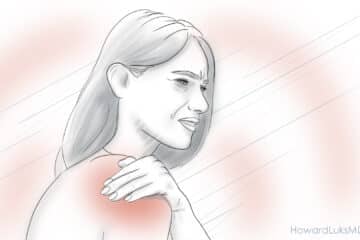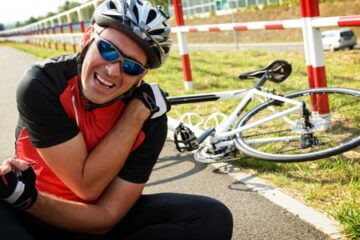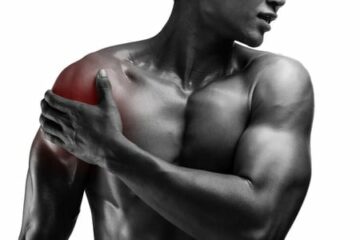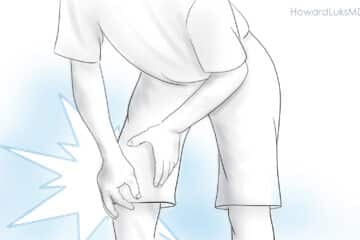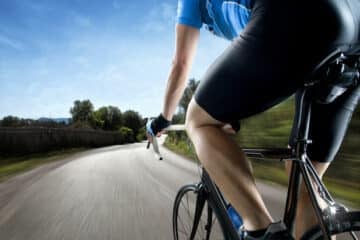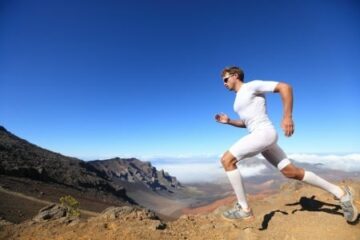
AC Separations are a relatively common cause of shoulder pain and deformity. An AC Separation, also called a Shoulder Separation is a different injury then a Shoulder Dislocation.
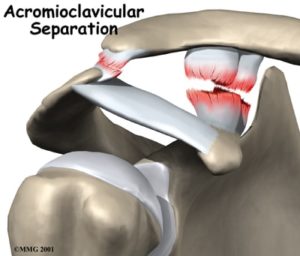
What is the AC Joint?
The AC Joint is where your collar bone meets your scapula (or shoulder blade). The two bones are held together by many strong ligaments.
The AC joint is commonly injured as a result of a blow to the side or top of your shoulder.
Types of AC Joint Separations
There are many different types of AC Separations. The type of AC separation will guide our treatment plan. Luckily, most AC Separations are mild or Grade I and II.
In mild Grade I or II AC Separations there will be pain on top of the shoulder, and perhaps mild swelling. You will be very tender over a small area on the top of your shoulder. There should not be a significant deformity (bump) noted.
In Type III, IV or V or more severe AC separations, when more of the ligament supports are torn, you will have severe pain on top of the shoulder and you will now notice a deformity is present. You will see a bump on top of your shoulder. It might be a small bump, or it could be a rather large and disturbing bump.
When you have an AC separation the ligaments which connect the collar bone to the scapula tear. The deformity or bump following a shoulder separation occurs because the scapula (and arm) drops down. Most people mistakenly believe that the collar bone popped up.
Do I need Surgery for an AC Separation?
Most AC separations can be effectively managed without the need for surgery. Most of the recent literature shows no difference between surgically treated AC separations and non-surgically treated separations.
We grade AC or Shoulder separations by how far the collarbone is from the scapula. The further the distance, the higher the grade. Most surgeons used to only rely on the grade of the shoulder separation to determine whether or not surgery was necessary. Things have changed. Surgery for all Type III AC separations is no longer recommended.
We now know that there are “stable” Type III AC separations, and there are “unstable” III AC separations.
- Stable Type III AC separations have a large bump, but the end of the clavicle or collar bone is stable, it moves around a little, but it doesn’t clunk in and out of place.
- Unstable Type III AC separations produce a large bump, but the clavicle remains very unstable. The clavicle clunks over the shoulder and the shoulder easily dips under the clavicle. This situation can significantly bother you with attempts to use the arm, even after weeks of healing time.
Considerations before surgery for an AC Joint or a Shoulder Separation:
- The severity or grade of your injury
- We must also consider the “stability” of the clavicle (see below)
- IS it your dominant arm?
- what sports you are involved with?
- and if any other injuries exist.
An unstable Type 3 ACJ separation means that even after a 3 week period of rest, every time you move your shoulder you feel, and see the end of the collar bone moving, and that leads to pain, as well as poor function. If you are an overhead athlete with an unstable AC separation your performance and endurance will suffer.
A stable ACJ Separation means that you do not feel the clavicle moving around significantly as you move the arm. It also means that within a few weeks after your shoulder separation you are mor comfortable and after rehabilitation your function is good.
IF you have an unstable Type III (or greater) AC separation, your dominant arm is involved and you are an overhead athlete then surgery is typically advised to repair the AC Joint, and to repair the ligaments of the AC Joint. During the surgery we bring the shoulder back up to meet the clavicle and then we reconstruct or repair the ligaments around the AC Joint to protect it from future injury and restore your level of function.
Bottom Line: For ACJ separations, you want to follow a short period of rest with a course of rehabilitation. After a few weeks (3-4) you will know whether or not your AC separation will be tolerated (stable) and your function has been restored… or you will know if you are not tolerating the instability, pain and loss of function (unstable). In the later situation where you are not coping well or tolerating the injury and loss of function, then you can consider surgery for your AC separation as a reasonable option.
Any questions?



